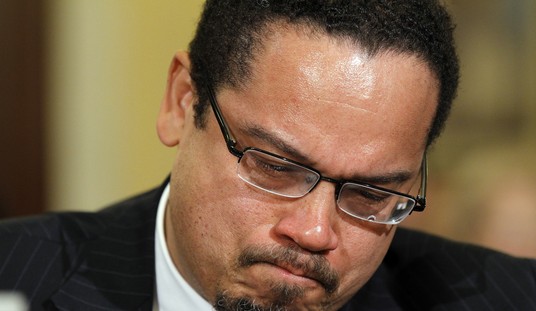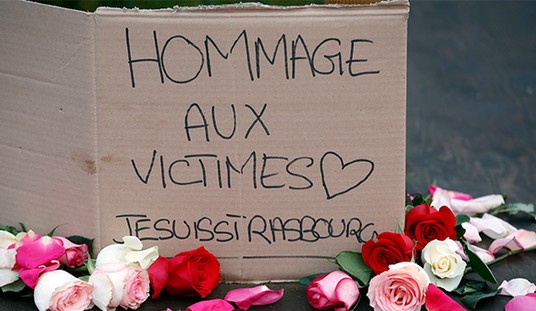The deuce you say! This flash from the Paper of Record only surprises to the extent that the New York Times covered this issue at all. “Are protests unsafe?” their headline asks, and then adds, “What experts say may depend on who’s protesting what.”
We’ve noticed, we’ve noticed:
So when conservative anti-lockdown protesters gathered on state capitol steps in places like Columbus, Ohio and Lansing, Mich., in April and May, epidemiologists scolded them and forecast surging infections. When Gov. Brian Kemp of Georgia relaxed restrictions on businesses in late April as testing lagged and infections rose, the talk in public health circles was of that state’s embrace of human sacrifice.
And then the brutal killing of George Floyd by police in Minneapolis on May 25 changed everything.
Soon the streets nationwide were full of tens of thousands of people in a mass protest movement that continues to this day, with demonstrations and the toppling of statues. And rather than decrying mass gatherings, more than 1,300 public health officials signed a May 30 letter of support, and many joined the protests.
That reaction, and the contrast with the epidemiologists’ earlier fervent support for the lockdown, gave rise to an uncomfortable question: Was public health advice in a pandemic dependent on whether people approved of the mass gathering in question? To many, the answer seemed to be “yes.”
Bear in mind that there have been little differences between the two protests from a scientific/transmission perspective — and those differences run against this trend. The shutdown protests usually involved dozens of people, sometimes hundreds, with inconsistent-at-best distancing and masking practices. They were also generally one-off events, with Michigan being the most obvious exception. The protests that followed the Floyd homicide, on the other hand, have been continuous, involve thousands if not tens of thousands of people, and have zero distancing and a middling use of masks.
If the lockdown protests were a crisis for future spikes, then so are the Floyd protests. The latter would be higher risk because of their size, density, and the length of time. So why aren’t epidemiologists warning about them? New York Times Magazine columnist Thomas Chatterton Williams warned a month ago in The Guardian — linked in today’s NYT report — that the Left was warping science in the same way they accuse conservatives, to serve their own political purposes.
The end result, Williams concludes, is that public health experts “have hemorrhaged credibility and authority”:
Less than two weeks ago, the enlightened position in both Europe and America was to exercise nothing less than extreme caution. Many of us went much further, taking to social media to castigate others for insufficient social distancing or neglecting to wear masks or daring to believe they could maintain some semblance of a normal life during coronavirus. At the end of April, when the state of Georgia moved to end its lockdown, the Atlantic ran an article with the headline “Georgia’s Experiment in Human Sacrifice”. Two weeks ago we shamed people for being in the street; today we shame them for not being in the street.
As a result of lockdowns and quarantines, many millions of people around the world have lost their jobs, depleted their savings, missed funerals of loved ones, postponed cancer screenings and generally put their lives on hold for the indefinite future. They accepted these sacrifices as awful but necessary when confronted by an otherwise unstoppable virus. Was this or wasn’t this all an exercise in futility?
“The risks of congregating during a global pandemic shouldn’t keep people from protesting racism,” NPR suddenly tells us, citing a letter signed by dozens of American public health and disease experts. “White supremacy is a lethal public health issue that predates and contributes to Covid-19,” the letter said. One epidemiologist has gone even further, arguing that the public health risks of not protesting for an end to systemic racism “greatly exceed the harms of the virus”.
The climate-change-denying right is often ridiculed, correctly, for politicizing science. Yet the way the public health narrative around coronavirus has reversed itself overnight seems an awful lot like … politicizing science.
Williams warned at the time that the whiplash from this manipulated messaging would have devastating long-term impact on the credibility of these experts. What happens when these same experts urge people to get vaccinated with a new compound? How about if we need a new round of shutdowns?
As it happens, the rollback of reopenings has become an acute issue already, along with the question of mask-wearing. This obvious politicization of science has damaged officials’ credibility, and the fact that the NYT is finally reporting on it shows just how risky that damage is. The problem is that the experts themselves still haven’t quite learned their lesson:
Catherine Troisi, an infectious disease epidemiologist at The University of Texas Health Science Center at Houston, studies Covid-19. When, wearing a mask and standing at the edge of a great swell of people, she attended a recent protest in Houston supporting Mr. Floyd, a sense of contradiction tugged at her.
“I certainly condemned the anti-lockdown protests at the time, and I’m not condemning the protests now, and I struggle with that,” she said. “I have a hard time articulating why that is OK.”
Mark Lurie, a professor of epidemiology at Brown University, described a similar struggle.
“Instinctively, many of us in public health feel a strong desire to act against accumulated generations of racial injustice,” Professor Lurie said. “But we have to be honest: A few weeks before, we were criticizing protesters for arguing to open up the economy and saying that was dangerous behavior.
“I am still grappling with that.”
While they’re grappling with their political manipulation, the people they hope to influence have stopped grappling with their advice. Instead of listening to instructions from scientists speaking within their narrow expertise, people are hearing political manifestos from advocates, and acting accordingly. They have no one to blame but themselves for that outcome, just as the idiots at the CDC who spent weeks insisting that masks were useless now have no one to blame but themselves for the people who won’t listen to their advice now to start wearing them.
If experts want to retain credibility, they should take better care of it. And that also applies to the mainstream media outlets that spent the last month pretending that this issue didn’t exist at all, including the New York Times. The Atlantic’s Zeynep Tufecki points out that the Gray Lady has been just as hyperbolic and slanted as any other media outlet when it comes to beachgoing, for instance, which is much less risky than congregating shoulder-to-shoulder for protests:
In other words, one can hardly imagine a comparatively safer environment than a sunny, windy ocean beach. It’s not that there is any activity with absolutely zero risk, but the beach may well be as good as it gets—if people stay socially distant, which is much easier to do on a big beach.
And yet many news organizations have seized upon beaches, and scenes of beachgoers, as a sign of why things are so bad in the United States.
For example, a New York Times article about the “disturbing” number of younger cases featured a beach photo with two women—in bikinis—who are very far away from everyone else in the image frame, who are also clearly far away from everyone else, alone or in small groups. They’re demonstrating the ideal precautions public-health experts have been begging us to undertake for months. Similarly, a Washington Post article talking about how Myrtle Beach, South Carolina, became “a coronavirus petri dish” includes a picture with the caption “Crowds pack the beach in Myrtle Beach,” but the very few people in the photo are separated by tens or even hundreds of feet, at least, and there are no crowds and no packing. …
A pandemic is a communications emergency, as the saying goes, and the only effective way to communicate risk effectively is to tell people the truth in plain language, and to give them evidence-based advice on reducing risk. Furious scolding about the least risky part of a potentially risky chain of activities is certain to backfire. When we scold, people stop listening, especially when they figure out that the scolding isn’t evidence-based—and they eventually will. When authorities close parks and beaches without strong scientific evidence, socializing may well move out of sight to more dangerous settings indoors.
They have already discovered that the scolding is both evidence- and science-free, even when coming from scientists, and especially when coming from the media.








Join the conversation as a VIP Member